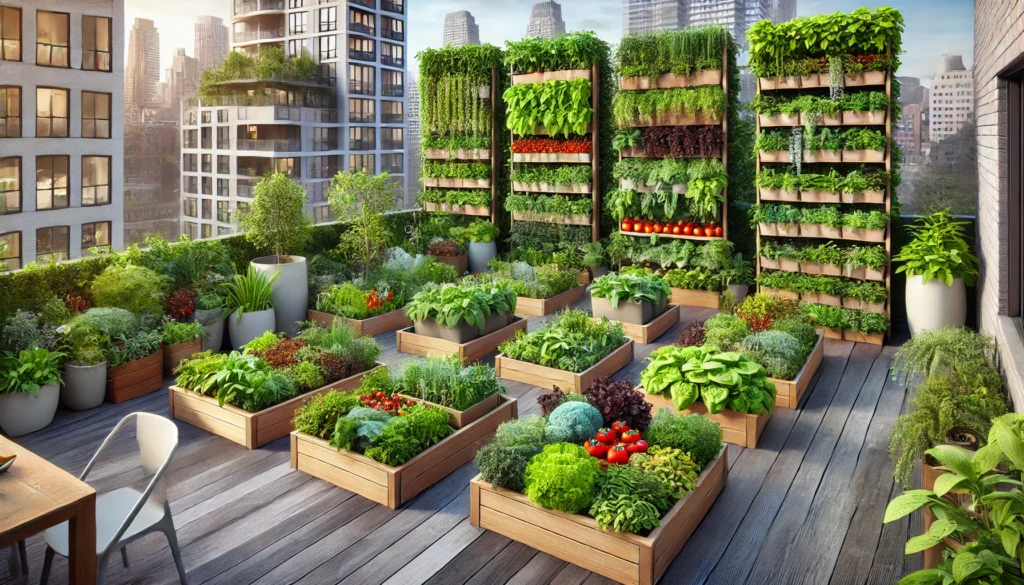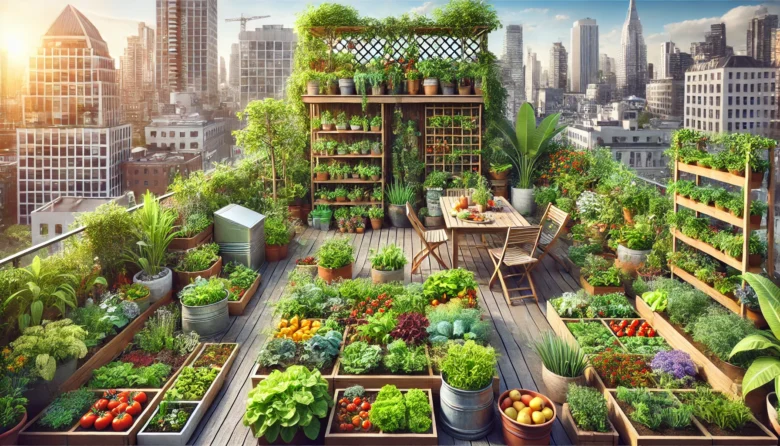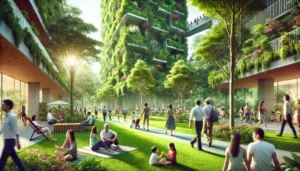Urban gardening is becoming increasingly popular, especially in bustling cities across India. One exciting and practical trend within this movement is edible landscaping. Edible landscaping involves integrating food-producing plants into your garden design, combining aesthetics with utility. Imagine walking into your garden and harvesting fresh herbs, vegetables, and fruits directly from your beautifully designed yard. This blog will explore how to start edible landscaping in your urban garden, making the most of your space and resources.
What is Edible Landscaping?
Edible landscaping is the practice of designing and planting a garden that is both visually appealing and functional. It combines ornamental and food-producing plants to create a beautiful, productive garden space. This method can transform any garden, whether you have a small balcony, rooftop, or traditional backyard.

Benefits of Edible Landscaping
Healthier Lifestyle: Cultivating your own food ensures access to fresh, organic produce right at home, promoting a diet rich in essential fruits and vegetables for good health.
Cost-Effective: Home-grown produce reduces grocery bills. Over time, the savings can be significant.
Environmental Impact: Edible landscaping supports sustainable living. It lessens the carbon footprint of transporting food from rural farms to urban markets.
Aesthetic Appeal: Edible plants can be just as beautiful as ornamental ones. Think of vibrant red tomatoes, lush green spinach, or the purple hues of eggplant.
Getting Started with Edible Landscaping
Assess Your Space
Start by assessing your space. Whether it’s a small balcony or a sprawling backyard, understanding its dimensions and conditions will help you plan effectively. Consider sunlight, shade, and soil quality.
Choose the Right Plants
Choose plants that are well-suited to your local climate and available space. Here are some options popular in Indian gardens:
- Herbs: Basil, mint, coriander, and thyme are easy to grow and can be used in various dishes.
- Vegetables: Tomatoes, bell peppers, spinach, and eggplant thrive in urban gardens.
- Fruits: Dwarf mango, lemon, and guava varieties can thrive in pots or compact areas.
Design Your Garden
Incorporate food-producing plants into your existing garden design. Use raised beds, vertical gardens, and containers to maximize space. Interplanting, where you grow different plants together, can also help utilize space efficiently and manage pests naturally.
Practical Tips for Success
Soil Preparation
Healthy soil is vital for a flourishing garden. Enhance the soil with compost and organic fertilizers, and adjust the pH to suit the growing plants.
Watering
Different plants have different water requirements. Drip irrigation or soaker hoses can be efficient ways to water your garden. Mulching helps maintain soil moisture and reduces water loss through evaporation.
Pest Management
Adopt organic pest control methods to keep your garden healthy. Companion planting, using natural predators, and homemade insecticidal sprays can help manage pests without harmful chemicals.
Harvesting and Enjoying Your Produce
The joy of edible landscaping culminates in the harvest. Regularly pick your produce to encourage more growth. Share the surplus with friends and family or explore preserving methods like pickling and drying.
Edible Landscaping in Indian Cities
Urban gardening has become vital to sustainable living in cities like Mumbai, Delhi, and Bangalore, where space is at a premium. Initiatives like community gardens and rooftop gardens are gaining momentum, encouraging residents to grow their own food. Whether in a high-rise apartment or a house with a small backyard, edible landscaping is a feasible and rewarding option.
Challenges and Solutions
Limited Space: Use vertical gardens, hanging planters, and window boxes to maximize space.
Pollution: Use protective covers and choose plants less susceptible to air pollution.
Time Constraints: Opt for low-maintenance plants and automated watering systems.
Conclusion
Edible landscaping is more than a trend; it’s a sustainable lifestyle choice. It combines the beauty of ornamental gardening and the practicality of growing your own food. Integrating food-producing plants into your urban garden allows you to enjoy fresh, organic produce and contribute to a greener environment.
Embark on this journey of edible landscaping and transform your urban space into a beautiful, productive garden. Happy gardening!
Author’s Note
Thank you for reading! I hope this guide inspires you to start your own edible landscaping journey. Growing your own food can be both a rewarding and fulfilling experience. Happy planting!
G.C., Ecosociosphere contributor.


